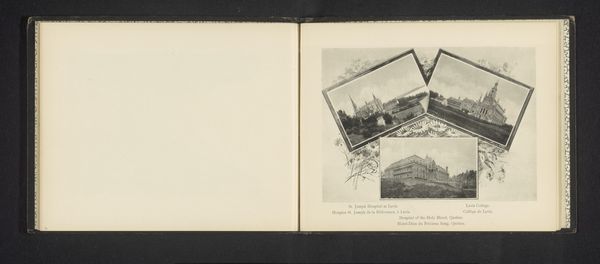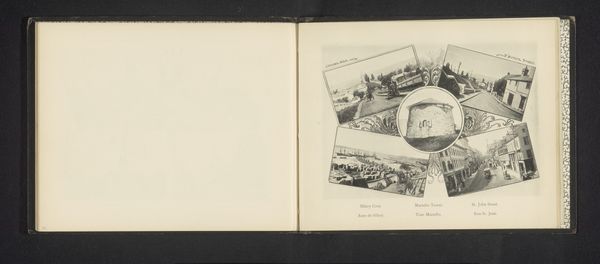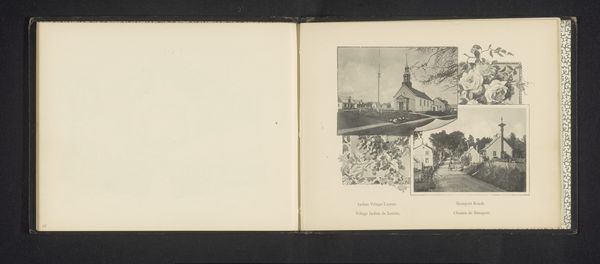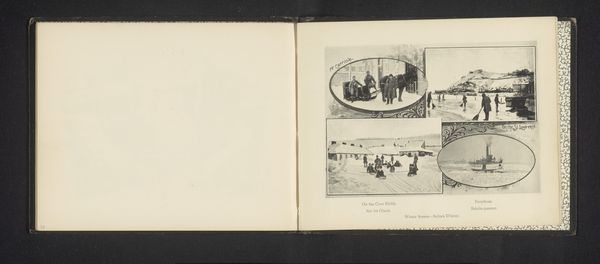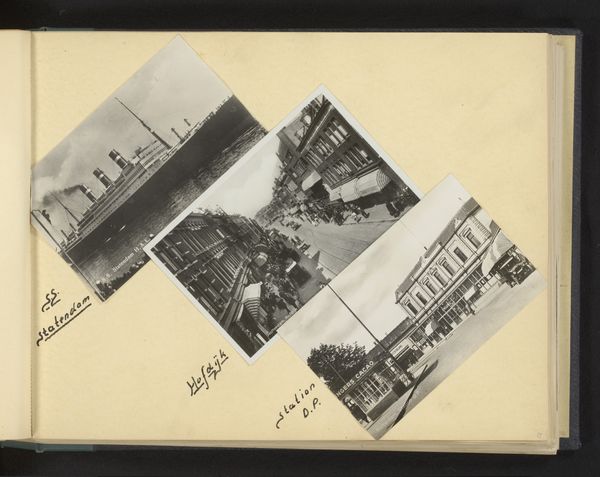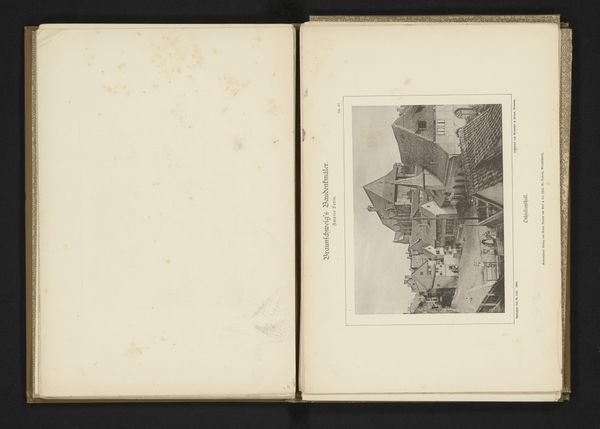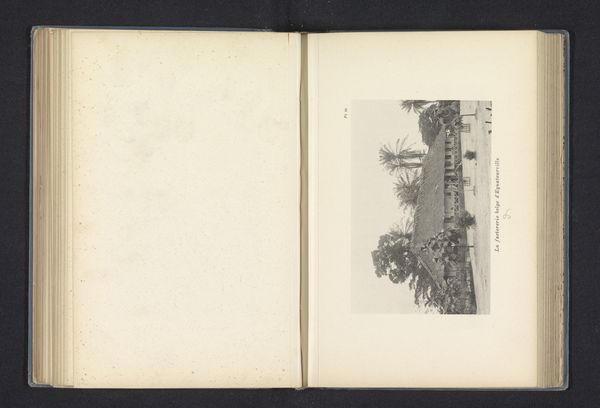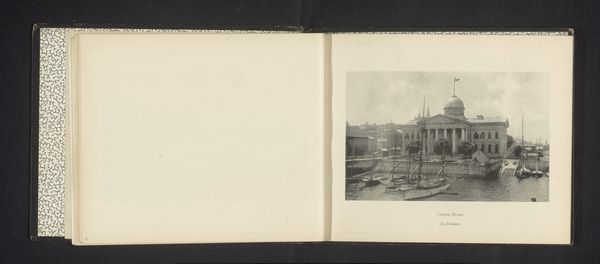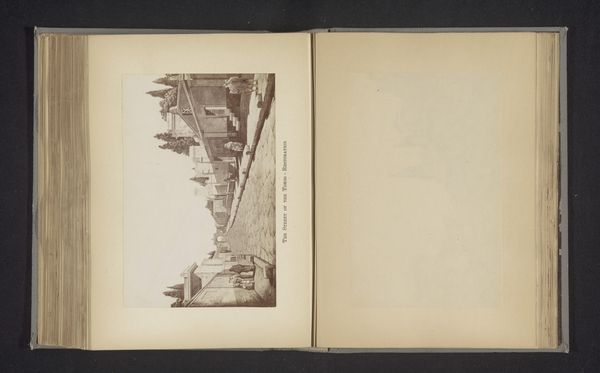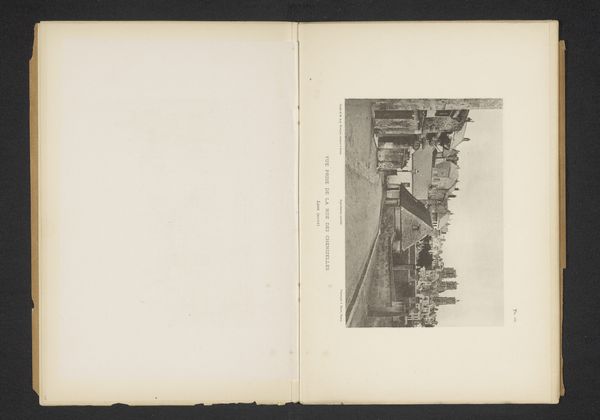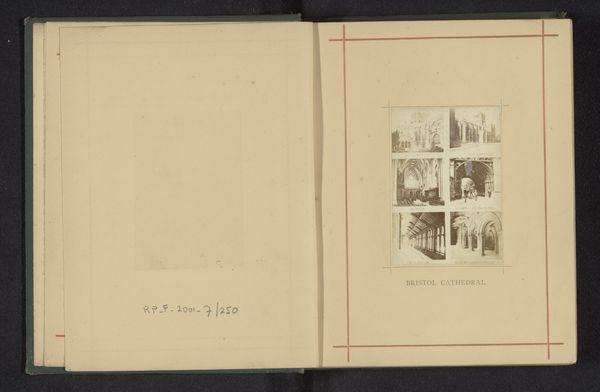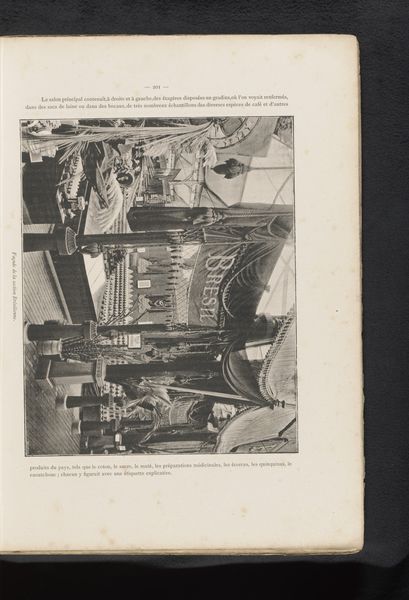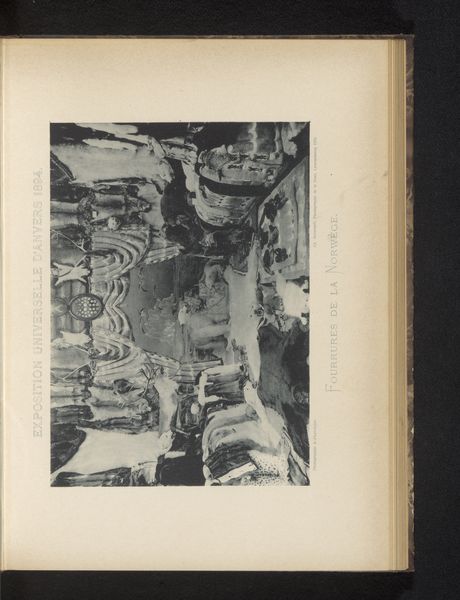
print, photography, albumen-print
#
aged paper
# print
#
sketch book
#
hand drawn type
#
landscape
#
personal journal design
#
photography
#
personal sketchbook
#
hand-drawn typeface
#
journal
#
pen and pencil
#
sketchbook drawing
#
cityscape
#
sketchbook art
#
albumen-print
Dimensions: height 127 mm, width 177 mm
Copyright: Rijks Museum: Open Domain
Editor: Here we have Jules-Ernest Livernois' "Fotomontage van drie kerken en het gerechtsgebouw te Québec," created before 1894. It looks like an open sketchbook page featuring albumen prints. There's something so intriguing about seeing these historical buildings presented almost as a scrapbook. What do you see in this piece? Curator: As a materialist, my immediate focus is on the albumen printing process itself. Consider the labor involved: preparing the paper, the precise exposure times in sunlight, the development, and the inherent variability of the medium. This is not simply capturing an image, but a craft steeped in chemistry and dependent on environmental factors and artisanal skill. This photograph becomes an artifact. How does this affect your interpretation of the subject matter? Editor: That’s a great point! I hadn’t considered the process so deeply. It makes me think about the labor involved in constructing those buildings too, and how photography at the time, despite being “new,” was already documenting what was quickly becoming history. Curator: Precisely! And the montage aspect amplifies this. It's not just a representation of these buildings but an active construction of a new, composite image, foregrounding the act of collecting, arranging, and ultimately, consuming these architectural "specimens." The buildings themselves symbolize established power structures – religious and legal. What do you think this implies? Editor: Hmm, it’s like he’s displaying them as products, almost souvenirs, suggesting a commodification of culture and power. The very act of Livernois assembling this album page points to this kind of transformation, doesn’t it? Curator: Exactly. These images, born from a labor-intensive chemical process, were designed to be circulated and consumed. And perhaps they are speaking to the shift of artistic craft through the industrial era? Editor: This really gives me a lot to think about. Thanks so much for sharing your expertise, seeing the buildings as part of a larger material and economic process is fascinating.
Comments
No comments
Be the first to comment and join the conversation on the ultimate creative platform.
